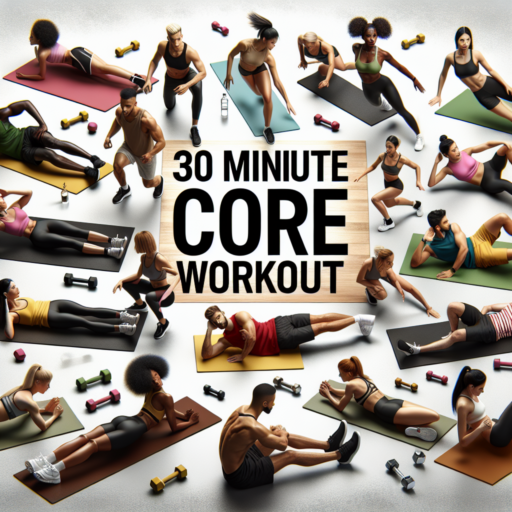How do I strengthen my core for running?
Strengthening your core is essential for runners, not only to improve performance but also to decrease the risk of injuries. A strong core helps maintain proper running form, even when fatigue sets in during those long runs or intense sprints. Here, we share strategies to fortify your midsection for your running endeavors.
Core Strengthening Exercises for Runners
To effectively strengthen your core for running, incorporate a variety of exercises that target all areas of your midsection. Planks are a runner’s best friend, as they engage not just your abdominal muscles but also your back and shoulders, providing a comprehensive core workout. Begin with standard planks, and as your strength improves, experiment with side planks to ensure balanced muscle development. Additionally, incorporating Russian twists and bicycle crunches can target your obliques, further stabilizing your core.
Incorporate Stability Training
Stability training is another crucial aspect of building a stronger core for running. Exercises like the bird dog or single-leg bridges force your core to work harder to maintain your balance, mimicking the stability needed during running. Using a stability ball or BOSU ball during exercises such as crunches or planks can significantly enhance the intensity of core strengthening workouts, pushing your muscles to adapt and grow stronger.
Remember, consistency is key when it comes to core strengthening. Integrate these exercises into your routine 3-4 times a week for the best results. Not only will you see improvements in your running performance, but you’ll also enjoy the added benefit of reduced injury risk thanks to a more stable and powerful core.
Can you build core muscles from running?
Running is often recognized as an effective way to improve cardiovascular health, but it also plays a significant role in strengthening core muscles. When running, your core works continually to stabilize your body, maintain upright posture, and assist in the propulsion forward. This constant engagement of the core muscles, including the abs, obliques, and lower back, contributes to building their strength and endurance over time.
However, the extent to which running can build core muscles depends on various factors such as running technique, intensity, and duration. Proper form is critical; maintaining a straight posture and engaging your core muscles actively during runs can enhance the core-building benefits of running. Additionally, integrating variations such as hill sprints or interval training can impose greater demands on your core, thereby accelerating muscle development.
Strategies to Maximize Core Engagement While Running
- Focus on posture: Keep your spine straight and shoulders back to engage your core effectively.
- Incorporate sprints and hills: These are excellent for challenging your core muscles due to the increased effort required.
- Practice deep breathing: Deep, diaphragmatic breathing engages your core and improves stability.
While running does contribute to strengthening core muscles, it should not be relied upon as the sole method for core development. Complementing running with specific core strengthening exercises ensures a well-rounded core workout regimen that can lead to visibly stronger and more defined core muscles.
What are the deep core muscles for running?
Understanding the deep core muscles involved in running is crucial for improving performance and reducing injury risk. At the core of it all, these muscles don’t just provide stability but also play a significant role in the power and efficiency of each stride. Identifying and strengthening these muscles can significantly enhance your running dynamics.
The main components of the deep core that are essential for runners include the transversus abdominis, the multifidus, the internal and external obliques, and the pelvic floor muscles. The transversus abdominis, often considered the most important, acts as a stabilizing belt, wrapping around the spine for protection and stability. The multifidus muscles, situated along the spine, work alongside to maintain spine alignment and reduce strain on the back during the repetitive motion of running.
Key Roles of Deep Core Muscles in Running
- The transversus abdominis aids in stabilizing the core, which is vital for maintaining proper posture and balance throughout the run.
- Multifidus muscles support the spinal column, which can help in preventing lower back pain, a common issue among runners.
- Internal and external obliques assist in the rotation of the trunk, which enhances running efficiency by facilitating a more streamlined movement.
- The pelvic floor muscles play a crucial role in maintaining core stability and alignment, which is key for a powerful stride and injury prevention.
By focusing on these deep core muscles, runners can not only improve their performance but also minimize the risk of injury. Integrating core strengthening exercises into your training regime is an effective way to ensure these muscles are properly engaged and conditioned for the demands of running.
No se han encontrado productos.
How many times a week should runners do core?
Understanding the optimal frequency for core training is crucial for runners looking to enhance performance and prevent injury. The core muscles play a pivotal role in stabilizing the torso, maintaining proper posture, and transferring force efficiently during runs. Therefore, determining the right amount of core work is essential for achieving balance in a runner’s training regimen.
Experts generally recommend that runners should aim to incorporate core workouts into their schedule 2-3 times per week. This frequency allows for adequate recovery between sessions while ensuring the core muscles are being strengthened consistently. It’s important to note that the intensity and duration of these workouts can vary based on individual fitness levels and training goals.
Key Components of a Runner’s Core Workout
- Planks and side planks for overall core stability and endurance
- Dynamic exercises such as mountain climbers and leg raises to engage the deeper core muscles
- Balance-focused movements like single-leg stands or stability ball exercises to improve proprioception and coordination
Integrating a variety of exercises targeting different core areas ensures a comprehensive approach to core training. This strategy not only boosts running performance but also minimizes the risk of injuries related to muscle imbalances or weaknesses. While the suggestion of 2-3 times a week is a general guideline, runners should listen to their bodies and adjust their core training frequency to fit their individual needs and recovery rates.




